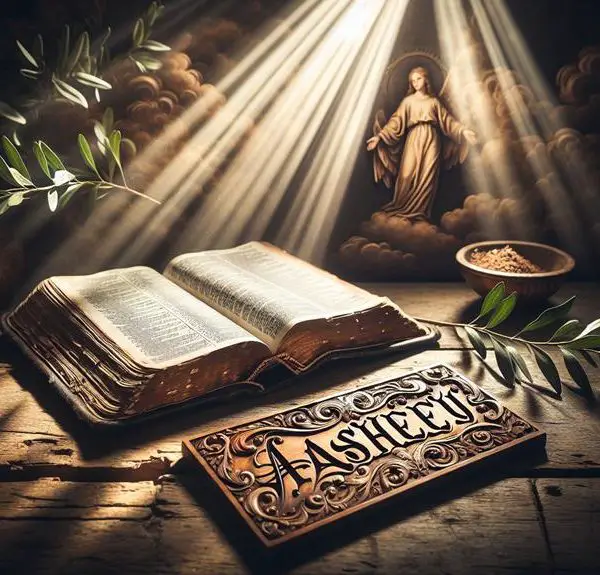Navigate the symbolism of blood in the Bible, from life to redemption, and uncover its deep spiritual significance.

What Does Blood Represent in the Bible
Have you ever considered how the Crimson thread weaves its way through the narrative of the Bible, binding themes of life, sacrifice, and redemption?
You're about to uncover the multifaceted role blood plays in biblical doctrine, from its symbolic representation of life to its pivotal role in the atonement of sin and the establishment of covenants.
Blood's profound essence in sacrificial rites and its signal of redemption and promise beckons a deeper understanding of its spiritual significance.
Let's explore this together, and you might find the answers to why blood holds such a venerable place in the scriptures.
Key Takeaways
- Blood symbolizes life, divine sanctity, and the covenant between God and humanity.
- It represents atonement, ritual purity, and the need for forgiveness of sins.
- Blood is central to themes of redemption, promise, divine mercy, and forgiveness.
- It signifies divine protection, unbreakable promises, and spiritual restoration through Jesus' sacrifice.
Symbol of Life

In the biblical context, blood represents the essence of life, underscoring its divine sanctity and integral role in the covenant between God and humanity. This perspective not only roots itself in spiritual doctrines but also intertwines with health implications and cultural perceptions, offering a multifaceted lens through which the symbolism of blood can be analyzed.
You'll find that the acknowledgment of blood as a life-giving substance isn't merely a theological stance but one that resonates with the understanding of blood's role in physical health. The Bible's emphasis on blood as a carrier of life mirrors modern medical knowledge, where blood's function in delivering essential nutrients and oxygen to body tissues is paramount. This parallel underscores the interplay between spiritual beliefs and the scientific recognition of blood's critical role in sustaining life.
Moreover, the cultural perceptions surrounding blood in the biblical era were deeply influenced by its symbolic significance. Blood was seen as so sacred that its handling was governed by strict regulations, reflecting a profound respect for life. This veneration of blood transcends religious boundaries, influencing societal norms and behaviors, shaping rituals, and dictating dietary laws. The reverence for blood in these contexts goes beyond its physical properties, embedding it with a spiritual and cultural weight that underscores its importance across various facets of life.
Hence, the symbolism of blood in the Bible extends beyond its scriptural mentions, weaving through the fabric of health considerations and cultural attitudes. It's a testament to the enduring power of blood as a symbol, embodying the essence of life in both literal and figurative senses.
Essence of Sacrifice

Delving into the essence of sacrifice, it's vital to recognize how blood serves as the quintessential symbol of atonement and redemption within the biblical narrative. This symbolism is deeply rooted in the notions of ritual purity and divine judgement, aspects that are central to understanding the sacrificial system presented in the scriptures. Blood, in this context, isn't merely a physical substance but a metaphysical representation of life itself, offered to God as a means to reconcile humanity with the divine.
The act of sacrifice, particularly animal sacrifice, is laden with the implications of transferring guilt and restoring purity. Here, blood isn't just seen as life being given up; it's viewed as the medium through which purification and sanctification occur. The shedding of blood, therefore, becomes a conduit for the cleansing of sin, not through the act itself, but through what the blood represents: a life surrendered in acknowledgment of divine sovereignty and judgement.
This intricate relationship between blood, sacrifice, and purity underscores a broader theological framework where divine judgement necessitates a form of restitution or purification. The ritualistic spilling of blood in sacrifices symbolizes a deeper, spiritual cleansing, highlighting the gravity of sin and the lengths to which divine justice must be satisfied. It's in this sacrificial context that blood transcends its physical properties, embodying the profound spiritual principles of redemption and reconciliation.
Atonement for Sin

Many biblical narratives position blood as the essential medium for atonement, highlighting its critical role in reconciling sinners with God. This concept roots deeply in the understanding of divine law, which stipulates that without the shedding of blood, there's no forgiveness of sins. This law isn't arbitrary but reflects the gravity of sin and the profound need for sin cleansing, underscoring the seriousness with which divine justice addresses human transgressions.
You'll find that in the Old Testament, the sacrificial system prescribed by divine law required the blood of animals to atone for the sins of the people. This wasn't merely a ritualistic practice but a profound demonstration of the cost of sin and the necessary pathway to purification and reconciliation with God. The act of shedding blood served as a tangible acknowledgment of the weight of sin and the lengths to which divine mercy would go to restore broken relationships between the divine and the human.
As you delve deeper, you'll see that this framework sets the stage for the ultimate act of atonement in the New Testament, where the blood of Christ, as the sinless Lamb of God, takes center stage. Here, the concept of blood as a means of atonement reaches its culmination. Christ's sacrifice fulfills the requirements of divine law once and for all, offering a permanent solution for sin cleansing. This pivotal event not only highlights the consistency of God's plan for redemption but also marks a transformative moment in the biblical narrative, where blood ceases to be a symbol of death and becomes the source of life and restoration for all who believe.
Covenantal Significance

Beyond its role in atonement, blood also serves as a profound symbol of covenantal commitment within the biblical narrative. This symbolism underscores the relationship between the divine and humanity, framed through the lens of ritual purity and adherence to divine law. Blood, in this context, isn't merely a biological substance but a medium through which covenantal bonds are established and reaffirmed.
Consider the following points that highlight blood's covenantal significance:
- Ritual purity: Blood plays a pivotal role in rituals designed to maintain or restore purity, aligning with divine standards. This purity isn't just physical but symbolic of a deeper, spiritual cleanliness necessary for covenantal relationships.
- Divine law: The use of blood in sacrifices underscores its importance in adhering to divine commands. It's a physical manifestation of obedience, a key aspect of covenantal fidelity.
- Sealing covenants: Blood is often involved in ceremonies marking the establishment of covenants, serving as a sign of their binding nature and the seriousness with which they're entered into.
- Renewal of vows: Sacrificial rites involving blood can also be seen as acts of recommitment to divine covenants, highlighting the ongoing nature of such commitments.
- Community solidarity: The communal participation in blood rituals reinforces the collective aspect of covenantal relationships, binding not just individuals but entire communities to their divine obligations.
In essence, blood's role in the Bible extends beyond atonement to embody the depth and durability of covenantal ties. It's a tangible reminder of the responsibilities and privileges that come with divine covenantal relationships.
Redemption and Promise

Blood's role in the biblical narrative encompasses not only covenantal commitment but also embodies themes of redemption and promise, illustrating how divine mercy and forgiveness are extended to humanity. This motif of blood as a medium for redemption is deeply interwoven with the fabric of divine narratives, manifesting in sacrificial rites that underscore the healing power inherent in acts of divine atonement. Moreover, the promise of divine protection, often sealed by blood, further enhances its significance as not merely a physical substance but as a symbol of God's enduring pledge to safeguard His people.
The table below outlines key biblical instances where blood symbolizes redemption and promise, reflecting its profound role in conveying themes of spiritual healing and divine safeguarding:
Instance |
Symbolic Meaning |
Implication |
|---|---|---|
Passover |
Divine Protection |
The blood on doorposts signified God's promise to spare the Israelites. |
Sacrificial System |
Atonement |
Blood sacrifices symbolized the redemption of sins, pointing to divine forgiveness. |
Covenant with Abraham |
Promise |
Blood signified the unbreakable promise between God and Abraham's descendants. |
New Covenant |
Redemption |
Jesus' blood symbolizes the new covenant, offering redemption to all humanity. |
Healing Miracles |
Healing Power |
Blood in miracles often denotes a deeper spiritual healing and restoration. |
In analyzing these instances, you'll discover that blood's thematic presence in scripture isn't merely literal but laden with layers of meaning, each pointing towards the overarching narrative of God's redemptive plan. Through this lens, the biblical symbolism of blood transcends its physicality, embodying the essence of divine protection and the eternal promise of salvation.
Frequently Asked Questions
How Is the Concept of Blood Used Metaphorically in the Bible Outside of Its Literal Meaning Related to Life and Death?
In exploring the metaphorical use of blood in the Bible, you'll find it embodies concepts beyond physical life and death. Blood purity, for instance, symbolizes moral and spiritual cleanliness, essential for communal and divine relationships.
Similarly, blood vengeance highlights the gravity and sanctity of life, demanding justice for wrongful shedding of blood. These metaphors deepen the narrative, weaving a complex tapestry of redemption, covenant, and ethical conduct within the biblical text.
What Are the Differences in the Significance of Blood Between the Old Testament and the New Testament?
In analyzing the significance of blood between the Old and New Testaments, you'll find distinct differences.
The Old Testament often emphasizes blood purification and ancestral guilt, portraying blood as a means to atone for sins and cleanse one's lineage.
Conversely, the New Testament shifts focus, highlighting blood as a symbol of salvation and eternal covenant through Jesus' sacrifice.
This transition reflects a broader theological evolution from ritualistic practices to spiritual redemption.
Are There Any Specific Rituals or Prohibitions Related to Blood That Are Mentioned in the Bible and Not Directly Tied to the Themes of Sacrifice or Covenant?
Diving into the Bible, you'll find specific dietary laws and prohibitions regarding blood, separate from sacrifice or covenant themes. For instance, Leviticus vividly outlines dietary restrictions, forbidding the consumption of blood.
This isn't just about tradition; it reflects a deeper, symbolic respect for life. Similarly, there's no clear mention of blood in healing rituals, suggesting a nuanced understanding of purity and holiness that goes beyond the physical to the profoundly spiritual.
How Do Various Christian Denominations Interpret the Symbolism of Blood in the Context of Communion or the Eucharist?
In analyzing communion interpretations, you'll encounter the transubstantiation debate, pivotal among denominations. Catholics believe the wine literally becomes Christ's blood, while Protestants often see it as symbolic.
This divergence shapes the grape juice option, popular in Methodist and Baptist churches, reflecting a preference for symbolism over literal interpretation.
These practices underscore deep theological divides on the nature of communion, revealing how varied Christian traditions approach this sacred ritual.
Can the Representation of Blood in the Bible Be Linked to Any Historical or Cultural Practices of Ancient Societies Mentioned in Biblical Times?
Diving into the tapestry of history, you'll find blood symbolism woven into the cultural rituals of ancient societies.
This imagery isn't just a thread of violence or sacrifice; it's a complex pattern of life, death, and rebirth that echoes through time.
Analyzing these practices, you can see how they're intricately linked to the representations of blood in biblical narratives, offering a richer understanding of these ancient texts and their enduring influence.
Conclusion
In conclusion, you've journeyed through the biblical landscape where blood symbolizes life's very essence, sacrifice's depth, sin's atonement, covenant's strength, and redemption's promise.
Like a multifaceted gem reflecting divine truths, blood intertwines with humanity's spiritual narrative, offering a beacon of hope and transformation.
This ancient motif, akin to an old-timey compass, guides you towards understanding the profound interconnectedness of life, sacrifice, and divine promise, underscoring the timeless relevance of these concepts in a modern quest for meaning and redemption.



Sign up